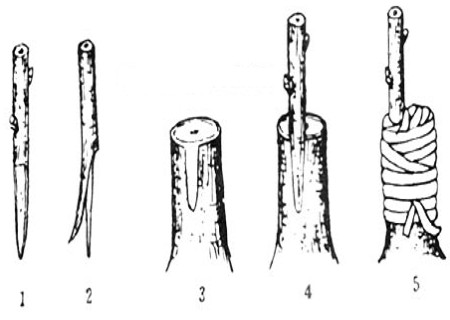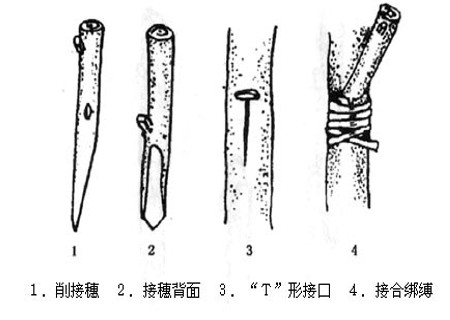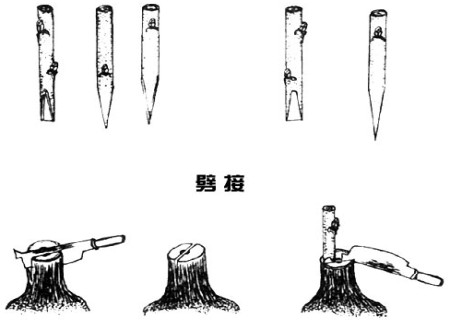Tongue grafting technique of pear tree bark insertion
Grafting is to artificially connect the branches or buds and other tissues of one plant to the appropriate parts of the branch, stem or root of another plant, so that it can heal and grow together to form a new plant. This branch or bud is called "scion", and the plant bearing scion is called "rootstock".

In grafting, the scion is called "branch grafting"; if the scion is a bud, it is called "bud grafting". During the period from the beginning of rootstock bud germination to leaf expansion, spring grafting can be carried out, including bud grafting and branch grafting; summer bud grafting or green branch grafting can be carried out from the beginning of semi-Lignification of new shoots of rootstock; autumn budding can be carried out before the new shoots of rootstocks stop growing in autumn. root grafting can be carried out in winter, overwintering healing in sand storage, and colonization in the following year.
For the grafting of pear trees, it is best to use "square" bud grafting and dew bud binding after semi-Lignification of rootstocks in summer, and "skin and tongue grafting" should be used to spread leaves after the rootstocks germinate in spring. the above two methods need to keep the mouth of "drainage (bleeding fluid)".
Pear tree pear bark tongue grafting technique:
It is improved on the basis of skin grafting. The suitable time for grafting is when the rootstock and scion are easy to peel.
1. First of all, cut the scion to grow a tongue-shaped surface of about 4cm.
2. Pinch the cortex of the tongue-like part with your hand to separate it from the xylem.
3. Cut off the grafting site of the rootstock, and then scrape off a layer of epidermis which is about 5-6 cm long and slightly wider than the scion on the smooth side of the bark of the rootstock.
4. The tongue-shaped xylem of the scion was then inserted between the cortex and xylem of the rootstock, and the skin layer of the scion was applied on the cutting surface of the outer surface of the rootstock and exposed about 0.5 cm.
Finally, wrap it tightly with plastic strips.
Time: 2019-06-09 Click:
- Prev

Ventral grafting technique of Pear
Grafted pear rootstocks I use T-shaped bud grafting, thicker to tiller seedlings, can use abdominal grafting or cutting grafting. The growth of grafted pear seedlings is often inconsistent because of the high density in the sowing nursery. It is best to separate the grafted semi-mature seedlings before they are released in the spring of the following year.
- Next

Split grafting technique of Pear Tree
Pear trees are easy to be grafted in fruit trees, and most grafting methods are easy to survive. It is best to use three bud grafting methods: sticking bud grafting, embedded bud grafting and T-shaped bud grafting in summer, and single bud abdominal grafting and split grafting in spring.
Related
- Fuxing push coffee new agricultural production and marketing class: lack of small-scale processing plants
- Jujube rice field leisure farm deep ploughing Yilan for five years to create a space for organic food and play
- Nongyu Farm-A trial of organic papaya for brave women with advanced technology
- Four points for attention in the prevention and control of diseases and insect pests of edible fungi
- How to add nutrient solution to Edible Fungi
- Is there any good way to control edible fungus mites?
- Open Inoculation Technology of Edible Fungi
- Is there any clever way to use fertilizer for edible fungus in winter?
- What agents are used to kill the pathogens of edible fungi in the mushroom shed?
- Rapid drying of Edible Fungi

